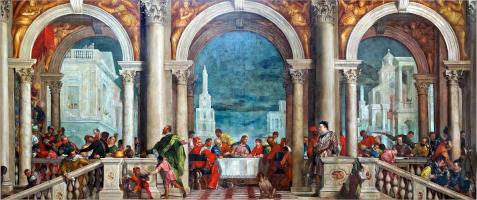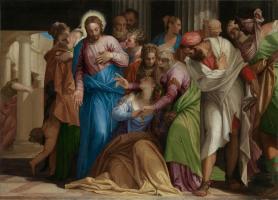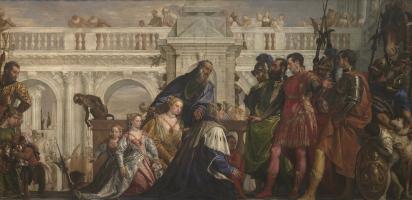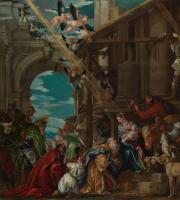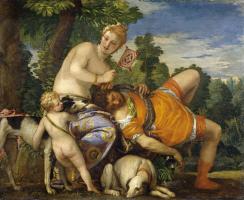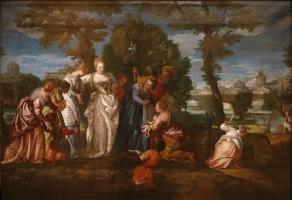Paolo Veronese
Born in Verona, Paolo Caliari was called Veronese after his native town; but he moved to Venice in 1553, and his work is closely associated with the Venetian school. His greatest contribution was the creation of decorative schemes and paintings which reflected the rich pageantry and splendour of Venetian ceremony.
Together with Titian and Tintoretto, Veronese is thought to have dominated the Venetian art scene in the sixteenth century. Although a native of Verona, Veronese of the most serene republic might have been a more fitting title for him. His works exhibit all the opulence the Venice had gathered through centuries of commerce and conquest. He thought nothing of painting religious scenes in a Venetian setting with the saints in silks and jewels, although some reproached him for it, others admired this flattering portrayal of their city-state.
Veronese’s gigantic works, some of them as much as thirty feet across, were carried out in a well-organized workshop with the assistance of his brother and several of his sons.
He specialized in biblical and historical subjects, and filled them with vast crowds of people of all sorts: aristocrats and peasants, fashionably dressed women and freakish buffoons, courtiers, musicians, soldiers and drunks, all gathered in settings of architectural splendour, rich tableaux in which fact and fantasy are merged.
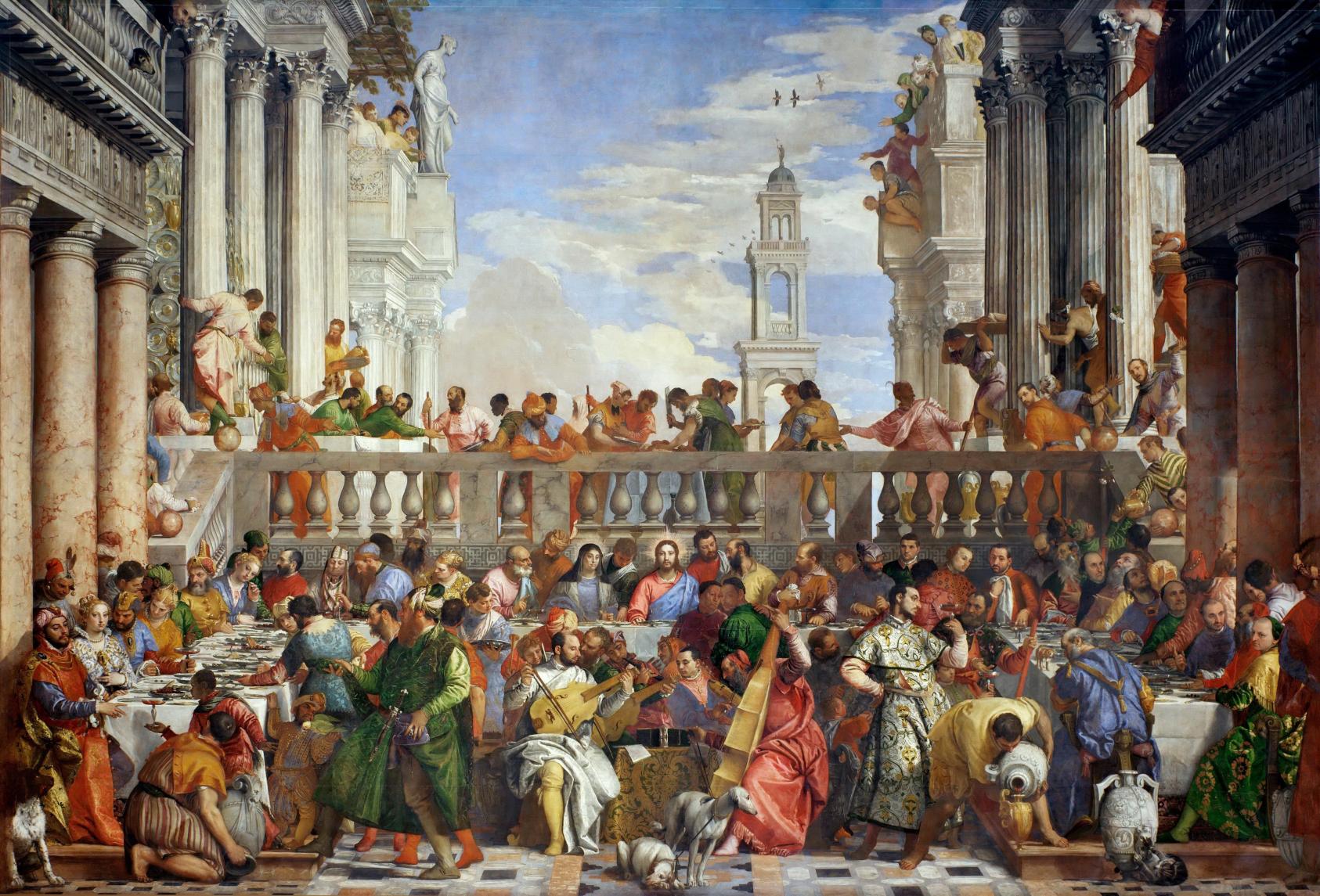 This work was produced for the refectory of the convent of San Giorgio
Maggiore, and it depicts Christ’s first recorded miracle, when, at the wedding
feast at Cana, he turned water into wine. The huge stone drinking jars can be
seen in the foreground of the painting.
This work was produced for the refectory of the convent of San Giorgio
Maggiore, and it depicts Christ’s first recorded miracle, when, at the wedding
feast at Cana, he turned water into wine. The huge stone drinking jars can be
seen in the foreground of the painting.
The only full face portrait is that of Christ himself, seated under the balustrade with the Virgin next to him; their expressions are tranquil and calm in the extravagant turmoil around them. Musicians in the foreground (with two elegant dogs) add to the mood of boisterous indulgence; one of them — dressed in a silver robe — is thought to be Veronese.
The composition is symmetrically balanced, with depth created by the classical colonnades at either side and the belltower in the distance. In the clear shadowless daylight, the teeming activity of the brilliantly choreographed crowd ( 132 figures in all) fills the vast canvas with life and energy.
 The Egyptian princess and her entourage, complete with dwarf jester, have come
straight from a gathering at a Venetian palazzo; with calm assurancee, Veronese
transports the bible story and the viewer to his own special world. As he told
the inquisition tribunal, ‘Painters take the same liberties as poets and
jesters.’
The Egyptian princess and her entourage, complete with dwarf jester, have come
straight from a gathering at a Venetian palazzo; with calm assurancee, Veronese
transports the bible story and the viewer to his own special world. As he told
the inquisition tribunal, ‘Painters take the same liberties as poets and
jesters.’


